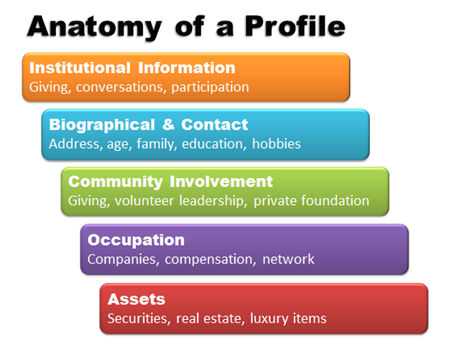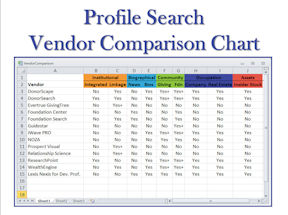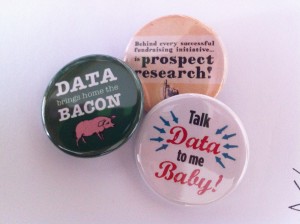Were you aware that social media is a competitive edge in major gift fundraising? You must have heard by now how organizations are leveraging giving days and crowdfunding as well as incorporating social media into annual fund drives – but what about major gifts?
As a fundraiser who asks wealthy individuals to make gifts to your organization, deliberate and professional use of social media will not only separate you from the pack, it could put you in league with your prospects. It’s time to own your participation in social media!
Start with Prospect Research
If you have a prospect research professional on staff, it’s time to have a talk about social media. Agree on the social media sites you want to know about and ask your researcher if channel participation and user ID can be added to the profile, or better yet, put into a database field that can be pulled into a report.
.
To get on the same page with your colleagues, you could order copies of the Prospect Research Perspectives: On Social Media and have informal discussions about articles over lunch or coffee.
.
Audit Your Personal Social Media Presence
You are probably on social media already. It’s time to audit your presence. Accept that there is no privacy online, no matter how diligent you are with your privacy settings. Decide how you want to be perceived – what your personal brand is – and make that uniform across every platform from LinkedIn to Facebook and beyond. Don’t underestimate the power of a professional head shot.
Consider what would happen if a seven-figure prospect invited you to connect on Facebook. What will your Facebook presence communicate to the prospect? You should also expect that prospects will explore your work history in places like LinkedIn.
You can get ahead of the requests and craft an action plan that will best demonstrate your personal brand and interests and your organization’s brand and giving priorities.
What does that mean? Take one channel at a time. Following are two easily accomplished examples that demonstrate channel-appropriate activity:
- LinkedIn: Liz picks two days a week when she catches up on industry reading, posts about something she has read, and links to the article or commentary. Whenever she learns new information about a giving priority, she shares the related press release, video, or other content. She decides to write a short article this year about integrity in major gift fundraising to post on Pulse and have it show on her profile page.
- Facebook: Liz uses Facebook to connect with friends and family, but colleagues and donors have requested to friend her. She’s a foodie and a country music fan so she decides that each time she goes out to eat or hear music she will find something unusual about the experience to share on Facebook. She also shares related articles, videos, and pictures on those topics. She still shares things like family and vacation items, but she’s careful not to share deeply personal information, saving that for offline. She posts occasional pictures from work events and office fun, too.
Now Get Your Edge On!
Once you know which social media channels have a critical mass of your prospects and donors, make sure you have an account on those social media sites. You can’t be everywhere, so choose carefully based on the data.
Now you are poised to use social media for cultivation. Many fundraisers successfully reach prospects through LinkedIn, but you could do much more.
When you discover a prospect is very active on one or more social media channels, connect with him or her there and regularly post content that is of interest to the prospect, as well as engage the prospect by sharing his or her content and making comments. This builds trust and rapport through genuine interactions – and all from your laptop, tablet, or smart phone.
Social media isn’t the way to reach out to every prospect, but if you polish your online brand and use prospect research to guide your social media activity you can sharpen your major gift edge.
More Resources You Might Like
 .
.
Want to learn more about how social media is impacting the fundraising profession? Check out Prospect Research Perspectives: On Social Media.

 Are you proud of the work that you do? Do you get excited about solving information challenges at work? If so, why not take the opportunity this month to share your
Are you proud of the work that you do? Do you get excited about solving information challenges at work? If so, why not take the opportunity this month to share your 



 Whether I’m teaching the
Whether I’m teaching the 


 Guest post by Darrel Spacone
Guest post by Darrel Spacone About Darrel Spacone, bCRE
About Darrel Spacone, bCRE Many of the important decisions about your life are made when you are not in the room.
Many of the important decisions about your life are made when you are not in the room.

